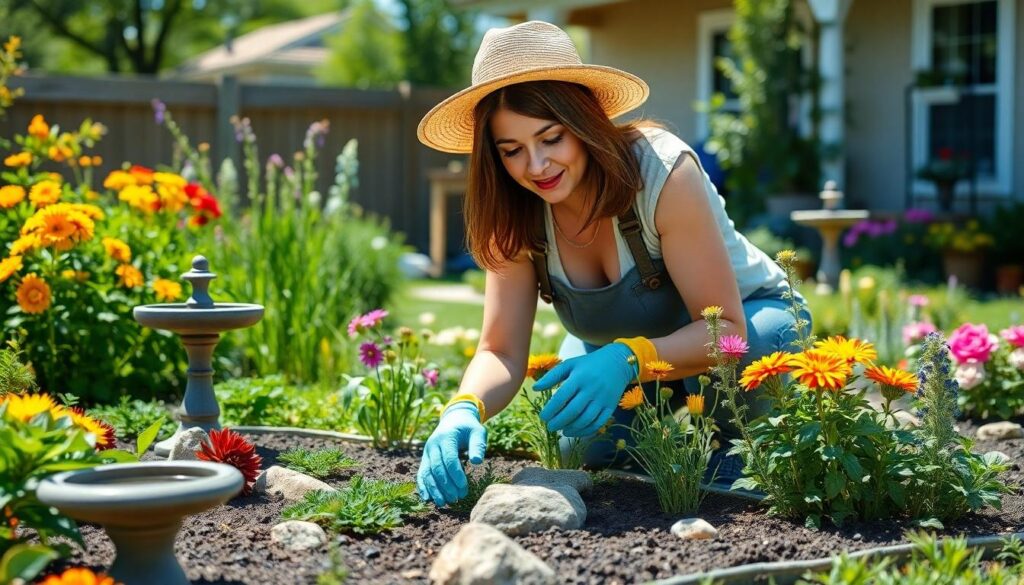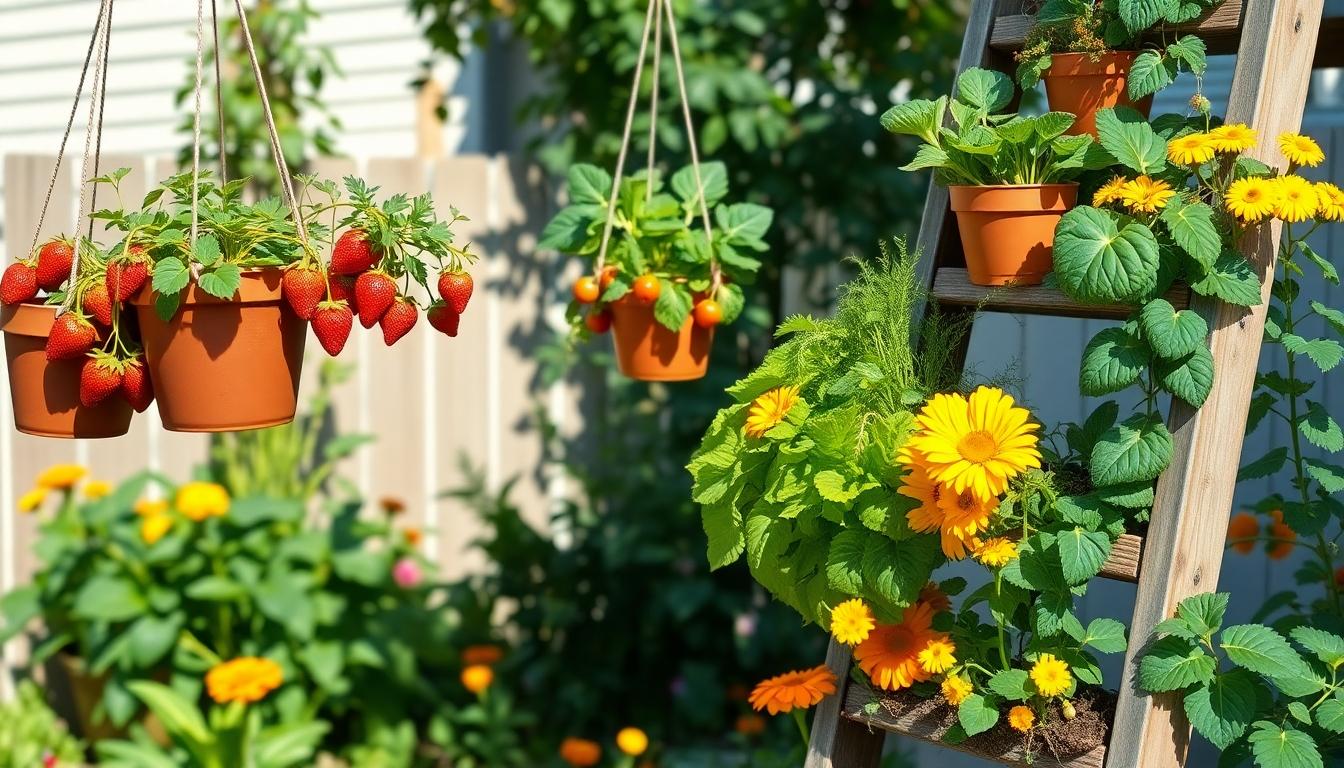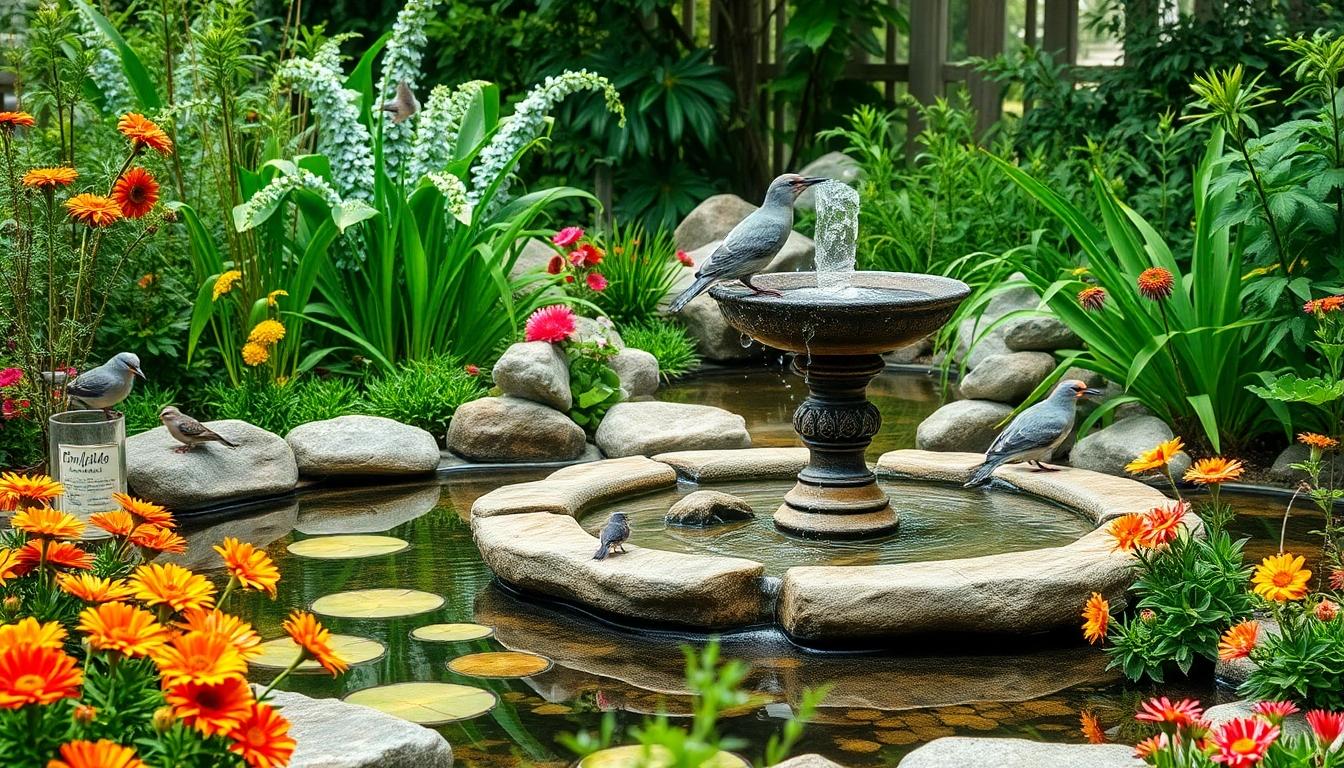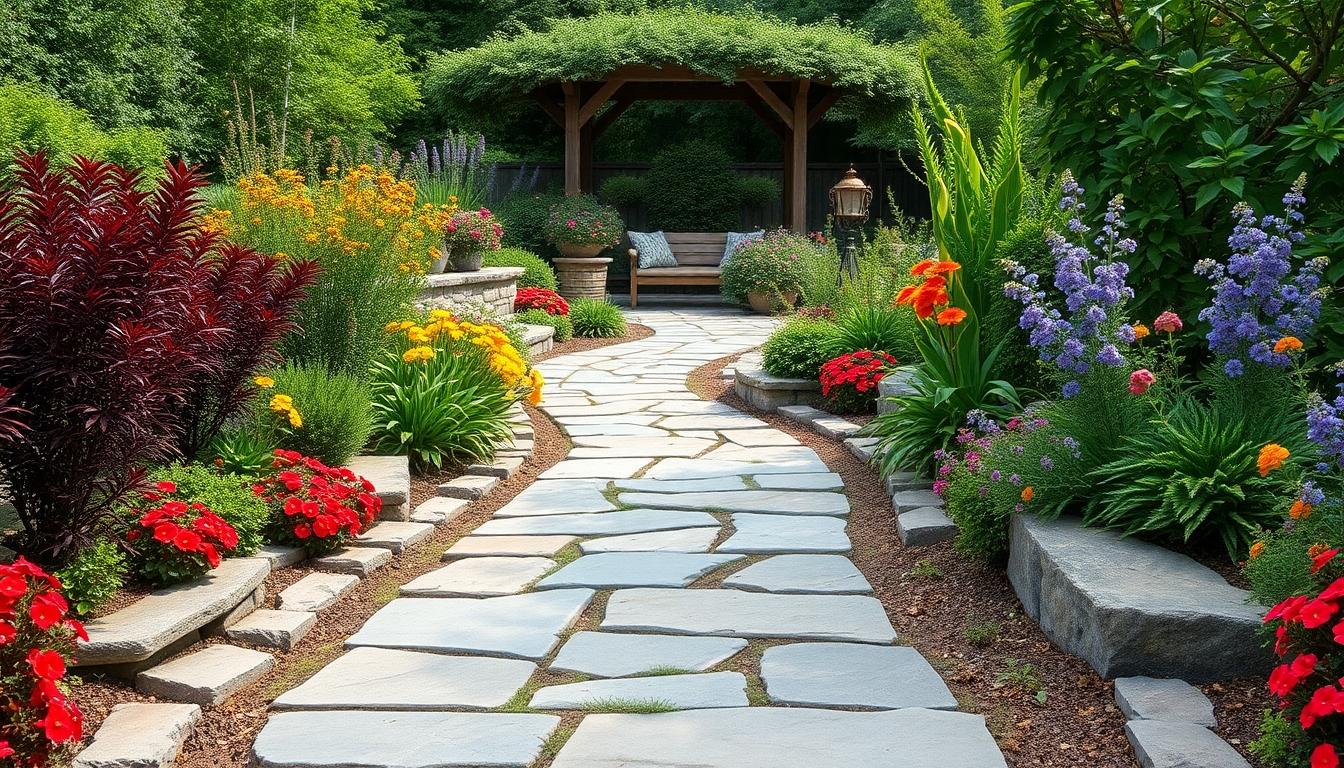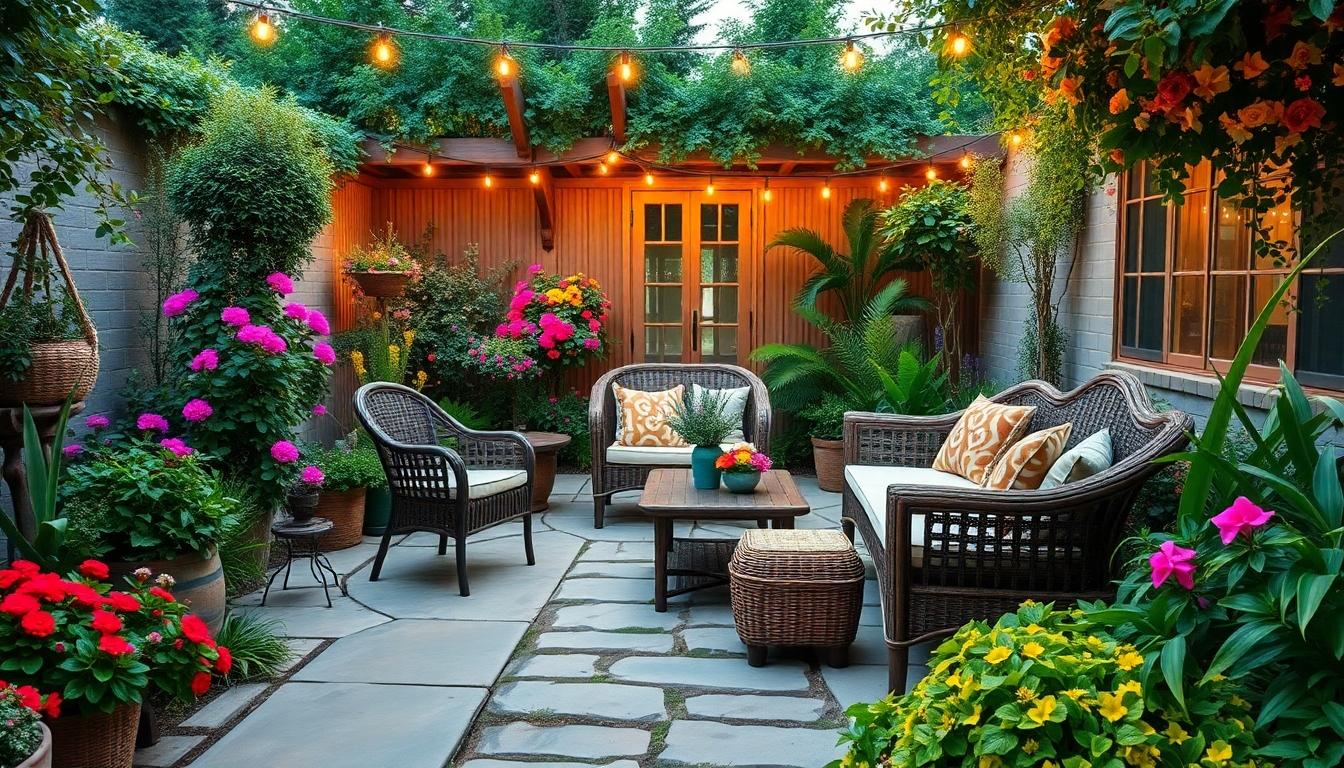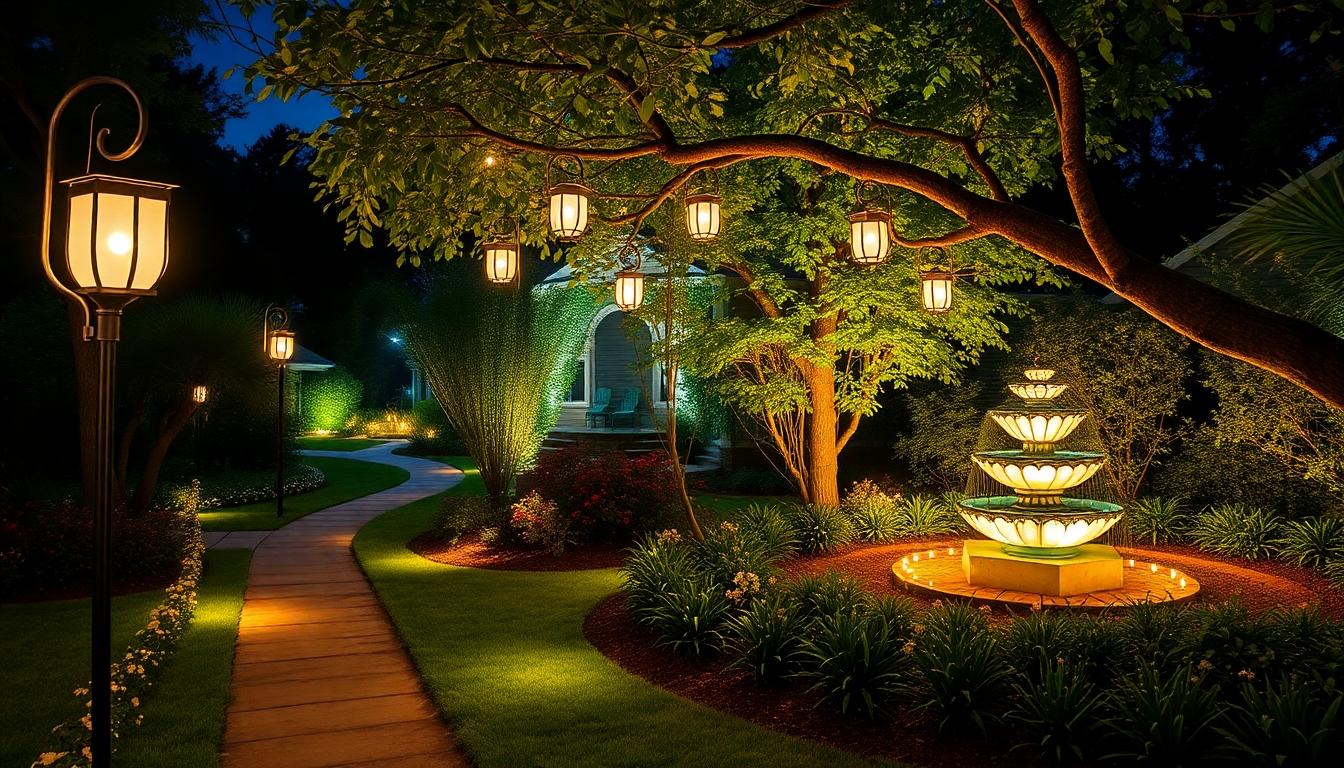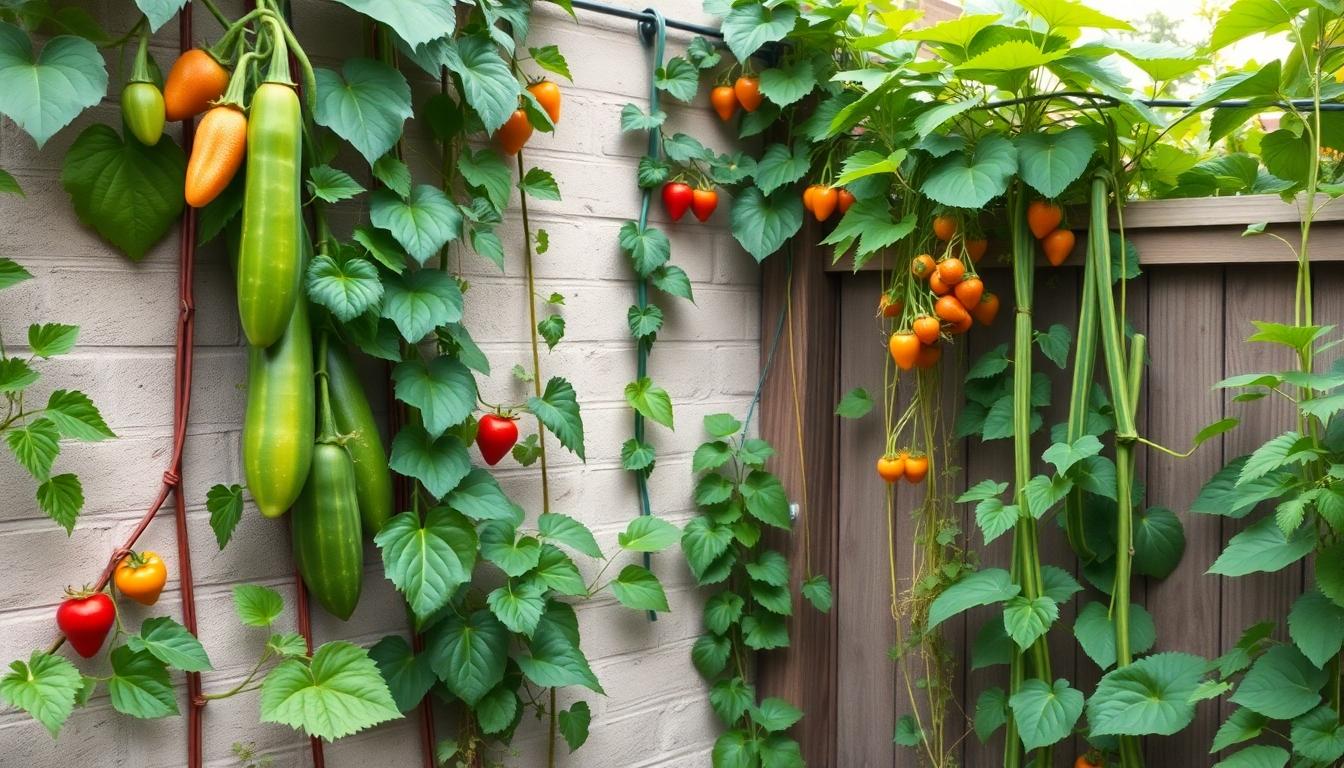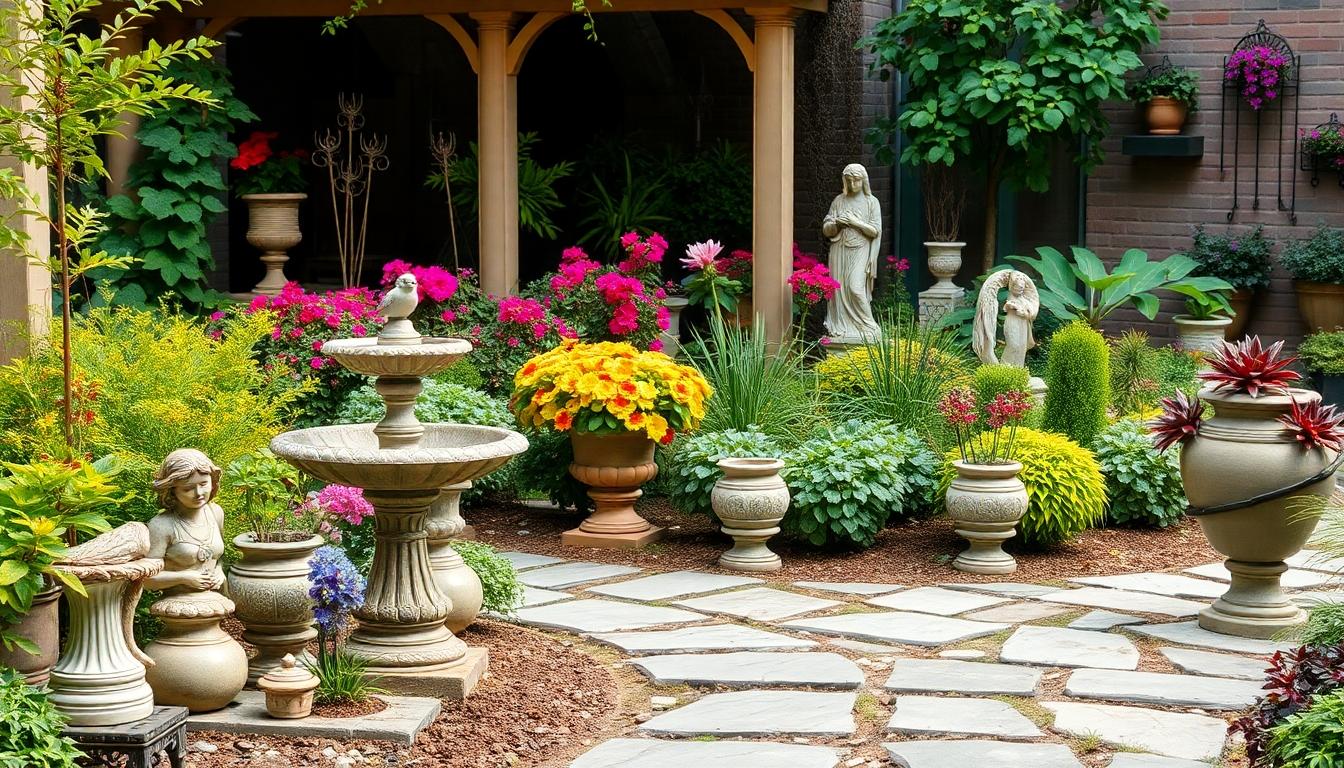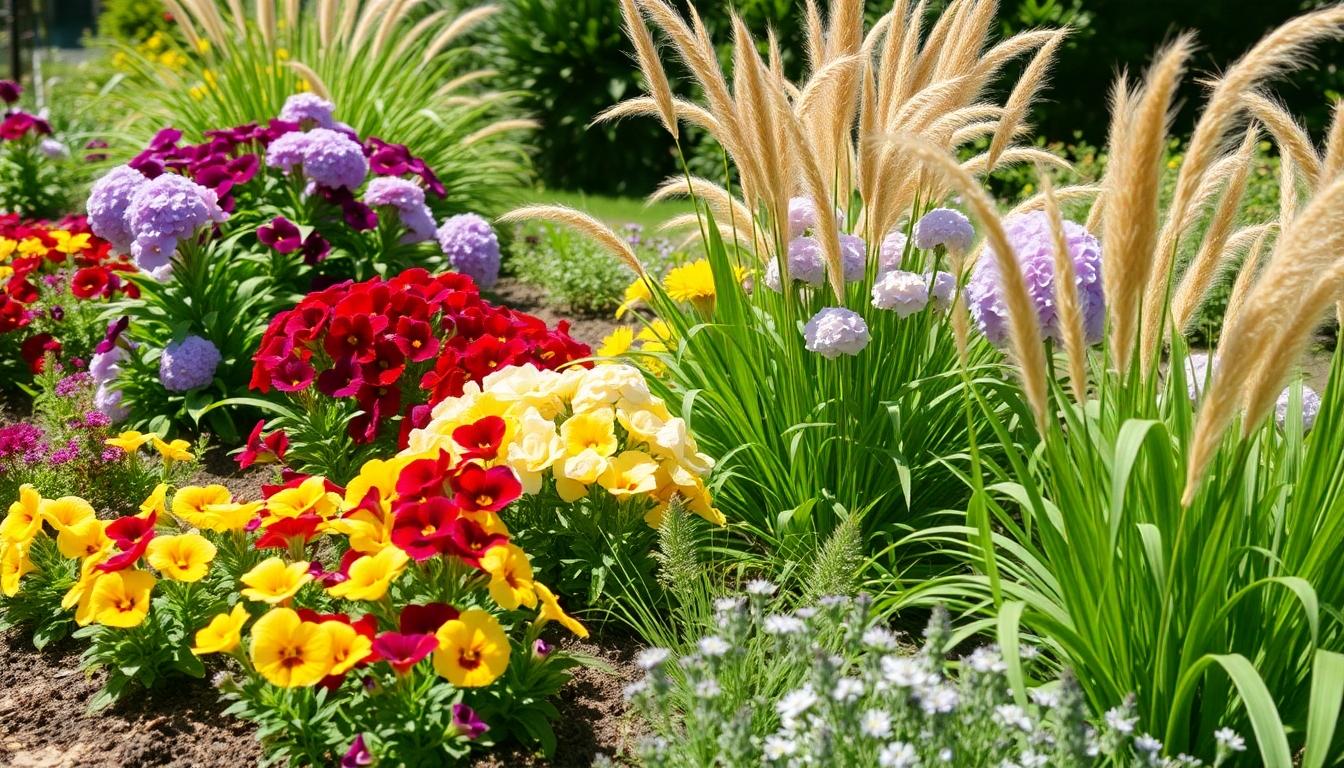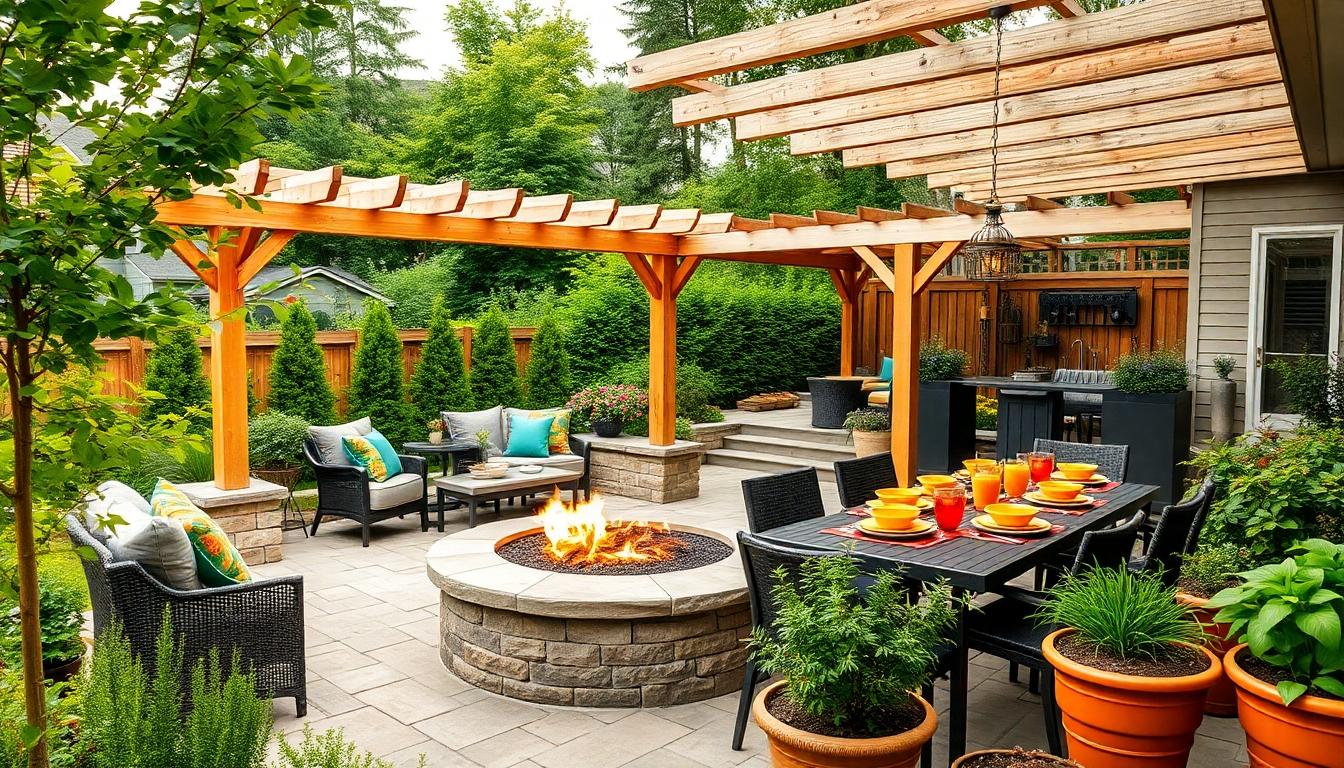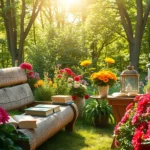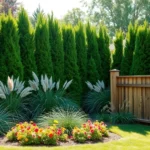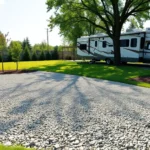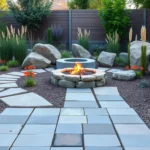Transforming your outdoor space into a thriving garden doesn’t need to be overwhelming. We’ve gathered the most essential garden ideas to help you create a beautiful and functional outdoor sanctuary without very costly or requiring professional expertise.
Whether you’re working with a sprawling backyard or a modest balcony, these fundamental gardening concepts will elevate your green space. From smart plant selection to strategic layout planning, we’ll guide you through proven approaches that maximize beauty while minimizing maintenance. We’ve tested these ideas across various climate zones and garden types, ensuring they’re adaptable to your exact needs.
10 Essential Garden Ideas for Beautiful Outdoor Spaces
1. Create Defined Garden Zones
Creating distinct zones in your garden establishes a sense of purpose for each area. Designate exact spaces for dining, relaxation, play, and growing plants. You’ll find that zoning makes even small gardens feel larger and more organized. Separating areas can be achieved using different materials, level changes, or strategic planting. Careful planning of these zones allows you to maximize functionality while maintaining visual harmony throughout your outdoor space.
2. Incorporate Water Features
Adding a water feature brings movement, sound, and tranquility to any garden setting. Even small fountains or container ponds can dramatically transform a space with their soothing sounds and reflective qualities. Water attracts beneficial wildlife like birds and pollinators to your garden network. The visual focal point created by water features draws the eye and creates a central element for your garden design.
3. Design a Four-Season Garden
Planning for year-round interest ensures your garden remains beautiful regardless of the season. Select plants with different blooming periods, striking foliage, interesting bark, and winter structure. Evergreens provide consistent structure while deciduous plants offer changing displays throughout the year. Incorporating plants like winter jasmine, witch hazel, and ornamental grasses guarantees visual appeal even during colder months.
4. Build Vertical Garden Elements
Utilizing vertical space maximizes growing area and creates dramatic visual interest in any garden. Trellises, arbors, wall planters, and climbing plants help transform blank walls and fences into lush garden features. Vertical gardens work particularly well in urban settings where ground space is limited. Plants like clematis, climbing roses, and ivy can soften structural elements while adding texture and color to your outdoor space.
5. Install Smart Lighting Systems
Thoughtful garden lighting extends the usability and enjoyment of your outdoor space well into the evening hours. Solar-powered path lights, string lights, and spotlights highlighting special features create ambiance and safety. Lighting can dramatically transform your garden’s atmosphere after dark, highlighting architectural elements and plantings. Modern low-voltage LED systems offer energy efficiency while providing flexible lighting options for different garden zones.
6. Embrace Native Plant Species
Choosing native plants supports local ecosystems while reducing maintenance requirements in your garden. Native species have naturally adapted to your local climate, soil conditions, and rainfall patterns. These plants typically require less water, fertilizer, and pest control than exotic varieties. A garden featuring plants like coneflowers, black-eyed Susans, and native grasses will attract beneficial pollinators while creating a sustainable industry.
7. Incorporate Edible Landscaping
Blending ornamental and edible plants creates beautiful spaces that provide food and visual appeal. Fruit trees, berry bushes, herbs, and vegetables can be artfully integrated into ornamental beds and borders. Edible landscaping makes efficient use of space while providing fresh produce throughout the growing season. Plants like blueberries, rainbow chard, and flowering herbs offer both culinary value and aesthetic charm in your garden design.
8. Design Thoughtful Seating Areas
Strategically placed seating invites relaxation and enjoyment of your garden from different perspectives. Position benches and chairs where they capture the best views, morning sun, or afternoon shade. Comfortable seating encourages more time spent outdoors appreciating your garden’s beauty. Built-in options like stone walls with cushioned tops or wooden platforms can double as architectural elements while providing functional seating.
9. Add Year-Round Container Displays
Container gardening offers flexibility and seasonal interest that can be easily changed throughout the year. Group containers of different heights and sizes for dramatic effect while showcasing seasonal plants. Containers allow gardening in challenging spaces like patios, balconies, and areas with poor soil. Plants can be rotated seasonally with spring bulbs, summer annuals, fall chrysanthemums, and winter evergreens maintaining continuous visual interest.
10. Create Wildlife-Friendly Habitats
Designing gardens that support local wildlife enhances biodiversity while adding natural interest to your outdoor space. Bird feeders, butterfly-attracting plants, bee hotels, and small water sources encourage beneficial creatures to visit and stay. Wildlife-friendly gardens contribute to ecological health while providing endless entertainment and educational opportunities. Plants like milkweed, coneflowers, and sunflowers support important pollinators while adding beautiful blooms to your garden industry.
Creating a Stunning Vegetable Garden: Layout and Plant Selection
A well-designed vegetable garden combines practicality with visual appeal. Strategic planning of your layout and thoughtful plant selection can transform a simple growing space into a stunning feature in your industry.
Best Companion Plants for Vegetable Gardens
Incorporating pollinator-friendly plants is essential for a thriving vegetable garden. Nasturtiums and marigolds attract beneficial insects that help with pollination while adding vibrant color to your growing space. These flowering companions not only enhance the beauty of your vegetable garden but also serve a crucial ecological function.
Pairing complementary vegetables creates natural pest management and improves growth. Basil planted alongside tomatoes enhances their flavor while repelling certain insects. Dill works wonderfully with cucumbers, supporting their development while attracting helpful predatory insects. These strategic pairings reduce the need for chemical interventions while maximizing harvest potential.
Space-Saving Techniques for Small Vegetable Gardens
Hanging pots offer excellent answers for gardeners with limited ground space. Strawberries, herbs, and lettuce thrive in suspended containers, allowing you to grow upward when horizontal space is at a premium. This vertical approach transforms walls and overhead areas into productive growing zones.
Ladder gardens provide multiple growing tiers in a compact footprint. Repurposed ladders create perfect platforms for herbs and small vegetables, with each rung offering a new planting opportunity. This technique adds architectural interest while maximizing your growing capacity in minimal space.
Container planting expands possibilities for vegetable gardening in confined areas. Decorative pots and planters work beautifully for vegetables that don’t require extensive root systems. Many popular crops including peppers, bush beans, and compact tomato varieties flourish in containers, bringing food production to patios, balconies, and even indoor spaces with adequate light.
Incorporating Water Features: From Simple Fountains to Elegant Ponds
Water features transform ordinary gardens into tranquil retreats by adding visual interest and soothing sounds. From bubbling fountains to elegant ponds, these elements create focal points that enhance the overall garden experience while attracting beneficial wildlife.
Low-Maintenance Water Feature Options
Bubble fountains offer an ideal solution for gardeners seeking simplicity without sacrificing beauty. These compact water features require minimal upkeep while providing delightful visual and auditory elements to any garden space. Pondless waterfalls represent another excellent low-maintenance option, eliminating the need for extensive pond care while still delivering the relaxing sound of flowing water. They conserve space effectively and require significantly less maintenance than traditional pond systems. Small bird baths provide perhaps the easiest entry point into garden water features, needing only occasional cleaning and refilling to maintain their functionality. These simple additions not only introduce water elements to your garden but also attract a variety of birds, improving biodiversity without demanding much time or effort.
Wildlife-Friendly Water Element Designs
Shallow ponds create perfect habitats for local wildlife, providing essential water sources for birds, insects, and small amphibians. Their gently sloping edges allow safe access points for various creatures, making them ecological hotspots in your garden. Native plantings surrounding water features dramatically increase their wildlife value by offering familiar food sources and shelter. Plants like marsh marigold, iris, and cardinal flower attract pollinators while helping maintain water quality naturally. Rocky streams with varied stone sizes mimic natural waterways, creating microhabitats for aquatic organisms and providing perching spots for birds. The incorporation of stones and boulders in and around water features develops essential hiding places for small creatures while adding visual texture to the design. Water features with these wildlife-friendly elements transform gardens into vibrant ecosystems that support local biodiversity while providing endless opportunities for nature observation.
Designing Garden Pathways That Enhance Your Landscape
Garden pathways do more than simply connect different areas—they define the flow and visual appeal of your entire industry. The right path design can transform an ordinary garden into a cohesive, inviting outdoor space that guides visitors through your carefully crafted plant collections and garden features.
Natural Stone Path Ideas
Natural stone walkways offer timeless elegance that enhances any garden setting. Large flat rocks work beautifully as stepping stones in shaded garden areas, creating a natural progression through lush plantings. Cobblestones can be arranged to mimic rustic riverbeds, adding character and old-industry charm to traditional landscapes. Flagstone paths provide striking contrast when paired with drought-tolerant plants in arid climate gardens, their varied colors complementing the subtle hues of xeriscaping. Curved layouts using irregular stone slabs or pebbles effectively soften architectural lines, creating harmony between hardscaping elements and the surrounding natural environment. These stone pathways create organic movement throughout your garden, seamlessly integrating structured elements with your carefully selected greenery.
Budget-Friendly Pathway Answers
Creating beautiful garden paths doesn’t require very costly. Recycled aggregates or mixed materials, such as combining bricks with gravel sections, dramatically reduce costs while adding textural interest. Woodchip or bark paths suit woodland gardens perfectly and can use pruned branches from your own property as natural edging. Gravel pathways paired with spaced stepping stones offer both affordability and minimal maintenance requirements, making them ideal for casual garden styles. Boardwalks constructed from repurposed timber provide practical answers for handling wet areas or uneven terrain without expensive excavation. These economical options allow you to direct more of your budget toward plants and other garden features while still creating defined, functional pathways that enhance your overall industry design.
Choosing the Perfect Garden Furniture for Outdoor Living
Selecting the right furniture transforms your garden into a functional outdoor living space where you can relax, entertain, and connect with nature. We’ve found that thoughtfully chosen pieces not only enhance comfort but also complement your garden’s aesthetic while withstanding environmental challenges.
Weather-Resistant Material Options
When selecting garden furniture, durability should be your top priority to ensure your investment lasts through changing seasons and weather conditions:
- Wicker and Rattan pieces offer a timeless natural aesthetic that blends seamlessly with garden environments. These materials have become increasingly popular for outdoor settings due to their lightweight nature and exceptional resilience against various weather conditions.
- Recycled Plastic furniture provides an eco-friendly option that resists weathering remarkably well. Modern versions mimic the appearance of wood while requiring virtually no maintenance and remaining impervious to moisture, insects, and UV damage.
- Solid Wood pieces create a warm, inviting atmosphere in any garden setting. Varieties like teak, cedar, and acacia can be treated with protective finishes to enhance their natural resistance to elements, preventing warping and deterioration over time.
- Weather-Resistant Fabrics for cushions and upholstery ensure your seating remains comfortable and vibrant even though exposure to sun and rain. Look for materials specifically designed for outdoor use with UV-resistant properties and water-repellent treatments.
Arranging Furniture for Maximum Comfort and Flow
Creating thoughtful furniture arrangements dramatically improves both the functionality and visual appeal of your outdoor space:
- Create Dedicated Zones by dividing your garden into distinct areas for relaxation, dining, and play. This zoning technique helps establish purpose for different sections of your garden while making even modest spaces feel more organized and spacious.
- Establish Clear Pathways using gravel or stone walkways to guide visitors through your garden. Well-defined paths connect your furniture zones while protecting plants and creating an intuitive flow throughout the space.
- Balance Hard and Soft Elements by mixing furniture with plants and decorative features. Positioning seating near flowering plants or arranging chairs around a fountain creates harmonious compositions that engage multiple senses.
- Install Strategic Lighting to extend the usability of your outdoor furniture into evening hours. Solar lights, string lights, and LED fixtures illuminate walkways and highlight seating areas, creating a magical atmosphere for nighttime enjoyment.
- Consider Scale and Proportion when selecting furniture pieces. Oversized sofas may overwhelm small gardens, while delicate bistro sets might look lost in expansive spaces. Measure your available area carefully before purchasing to ensure appropriate fit.
Implementing Smart Garden Lighting for Evening Enjoyment
Smart garden lighting transforms your outdoor space into a magical retreat after dark. These innovative systems allow you to enjoy your garden long after sunset while improving both ambiance and security.
Solar-Powered Lighting Answers
Solar-powered lights offer an eco-friendly and cost-effective way to illuminate your garden spaces. These convenient fixtures harness sunlight during daylight hours and automatically activate at dusk, eliminating the need for complicated wiring or electrical work. We’ve found solar lights particularly useful for illuminating pathways and steps, ensuring safe navigation through your garden after dark. Their wire-free design makes installation remarkably simple – just place them where they’ll receive adequate sunlight during the day. Many homeowners appreciate that solar lights require virtually no maintenance while providing reliable illumination night after night, making them perfect for gardens of all sizes.
Strategic Placement Tips for Garden Illumination
Strategic lighting placement dramatically enhances your garden’s nighttime appeal and functionality. Consider highlighting special garden features by positioning lights to showcase statues, water features, or prized plantings that deserve attention after dark. Pathway illumination serves both aesthetic and practical purposes – guiding visitors safely through your garden while creating visual interest. For maximum impact, carry out layered lighting by combining different types of fixtures such as string lights, lanterns, and spotlights to create depth and visual texture throughout your outdoor space. Security considerations should influence your lighting plan as well, with motion-sensor lights positioned to illuminate dark corners and entry points around your property. Smart lighting systems allow you to control all these elements remotely, adjusting intensity and color through smartphone apps or voice commands to create the perfect ambiance for any evening occasion.
Creating Vertical Gardens to Maximize Limited Space
Vertical gardening transforms underutilized spaces into productive growing areas, making it perfect for urban settings or compact yards. By utilizing walls, fences, and structures, you can dramatically increase your planting capacity without expanding your footprint.
Best Plants for Vertical Gardens
Climbing vegetables thrive exceptionally well in vertical gardens, with pole beans, peas, and cucumbers naturally reaching upward when provided with proper support. Small melon varieties can also be grown vertically when their developing fruits are supported with slings to prevent breakage. Fruits like grapes flourish when trained along pergolas, while strawberries adapt beautifully to hanging baskets where they cascade downward for easy harvesting. Nasturtiums serve multiple purposes in vertical gardens by climbing fences or trellises while simultaneously attracting beneficial pollinators and deterring common garden pests with their natural properties.
DIY Vertical Garden Structures
Cattle panel trellises offer robust support options, creating charming arched walkways or standalone structures strong enough to handle heavy-fruiting plants like squash and gourds. Window boxes and shelves mounted strategically on walls or repurposed ladders provide ideal growing spaces for herbs, lettuce, and other compact vegetables that don’t require deep soil. Hanging shoe organizers represent one of the most affordable DIY vertical answers, with individual pockets holding soil and plants like leafy greens or culinary herbs. For any vertical structure, we recommend using durable materials such as treated wood or galvanized wire to ensure longevity, while also incorporating proper drainage systems to prevent water-logged soil and root rot issues. Multi-tiered container gardens work wonderfully for maximizing space, allowing you to stack pots containing herbs, cherry tomatoes, and other compact edibles in ascending arrangements.
Adding Garden Ornaments and Decorative Elements with Purpose
Garden ornaments and decorations aren’t just afterthoughts—they’re essential elements that enhance your outdoor space when chosen with purpose. Thoughtful decoration can transform an ordinary garden into a personalized sanctuary that reflects your style and complements your planting design.
Functionality and Aesthetics
Bird baths serve as perfect examples of dual-purpose ornaments, attracting beneficial wildlife while adding visual interest to your garden space. These water features become natural focal points that bring movement and life to your industry throughout the seasons.
Maintaining a cohesive look requires selecting decorations that align with your garden’s established theme or style. Whether you’re creating a zen-inspired retreat or a cottage garden, your ornamental choices should reinforce this aesthetic direction rather than compete with it.
Creating depth in your garden design comes from thoughtfully layering different decorative elements. Combining various ornaments like statues, vases, and sculptural pieces adds dimensional interest and visual complexity that makes your garden more captivating and sophisticated.
Selecting Weather-Appropriate Decorations
Durability should be your primary consideration when choosing garden ornaments that will withstand the elements. Materials like terracotta, metal, and weather-resistant stone provide longevity in various climate conditions, ensuring your investment continues to enhance your garden for years.
Seasonal adaptability keeps your garden fresh and relevant throughout the year. We recommend selecting decorations that can be easily rearranged or exchanged as the seasons shift, allowing your garden to evolve with the changing weather patterns and plant life cycles.
Protection measures can significantly extend the life of your garden ornaments. Installing covers for more delicate pieces or applying waterproof treatments to wooden decorations helps shield them from rain, snow, and intense sunlight, preserving their beauty even though exposure to harsh weather.
Arranging Ornaments for Visual Impact
Balance creates harmony in garden design, whether through symmetrical arrangements that frame pathways or asymmetrical placements that create ever-changing visual interest. Strategic positioning of decorative elements helps establish a sense of order and intention throughout your outdoor space.
Focal points draw the eye and create visual anchors within your garden industry. Positioning important ornaments as statement pieces at the end of pathways or in prominent viewpoints guides visitors’ attention and creates a natural flow through your garden spaces.
Pathway guidance enhances the garden journey, turning simple navigation into an exploratory experience. Placing smaller decorations along garden paths creates rhythm and movement, subtly directing visitors through your garden while revealing delightful details along the way.
Incorporating Year-Round Color with Strategic Plant Selection
A truly captivating garden offers visual interest through all four seasons, not just during spring and summer. Strategic plant selection is the key to creating a industry that remains vibrant and captivating year-round.
Four-Season Planting Guide
Spring gardens come alive with cold-tolerant annuals that provide immediate color after winter’s dormancy. Pansies and osteospermums offer early blooms that thrive in cooler temperatures, while early perennials like bleeding hearts create dramatic focal points with their unique flower formations. These spring selections establish a foundation of color that transitions beautifully into summer.
Summer landscapes benefit from heat-loving marigolds that provide consistent color even during the hottest months. Pairing these annuals with flowering shrubs like hydrangeas and roses creates layers of interest throughout the garden. The combination of annuals and perennials ensures continuous blooms even as individual plants cycle through their flowering periods.
Fall gardens maintain their appeal through late-season perennials such as sedum, which offers striking flower heads that persist well into autumn. Trees with vibrant foliage, particularly Japanese maples, transform the garden with spectacular color as temperatures drop. These elements ensure the garden remains visually captivating even as summer flowers fade.
Winter interest comes from strategic selections like winterberry holly (Ilex verticillata), which produces bright red berries that persist long after leaves have fallen. Witch hazel (Hamamelis) provides surprising fragrant blooms during the coldest months, creating unexpected moments of delight. These winter performers ensure the garden never lacks color or interest, regardless of snow or frost.
Low-Maintenance Perennials for Continuous Color
Hostas serve as the backbone of shade gardens with their impressive variety of foliage colors and textures. Available in sizes ranging from miniature to massive, these low-maintenance perennials require minimal attention while providing consistent structure throughout the growing season. Their architectural leaves create dramatic contrast against flowering companions.
Lenten roses (Helleborus) deliver winter and early spring blooms when most gardens remain dormant. Their drought-tolerant nature makes them particularly valuable for busy gardeners, and their nodding flowers in shades of white, pink, and purple appear when the garden needs color most. These reliable perennials return year after year with minimal care.
Ornamental grasses introduce movement and sound to the garden industry while requiring almost no maintenance. Varieties like switchgrass provide vertical interest during summer and fall, then transform into golden sculptures that catch winter light. Their four-season appeal makes them essential components of any low-maintenance garden plan.
Sedum thrives in challenging conditions where other plants struggle, making it perfect for drought-prone areas. These succulents offer late-season blooms that attract pollinators and provide food for birds well into winter. Their drought resistance eliminates the need for regular watering, creating truly self-sufficient garden areas.
Combining evergreens with these seasonal performers ensures the garden always has structure and color. Plants with multi-season appeal, such as Crataegus (hawthorn), provide spring flowers, fall berries, and attractive autumn foliage from a single planting. For flexibility in seasonal displays, hanging baskets allow for quick color updates without disturbing the garden’s permanent elements.
Designing Outdoor Entertaining Areas Within Your Garden
Transforming your garden into an inviting entertainment space requires thoughtful planning and strategic design elements. Fire pits and pergolas serve as excellent focal points that naturally draw guests together, while properly arranged seating facilitates meaningful social interaction.
Creating Cooking and Dining Zones
Dedicated cooking and dining areas form the heart of any outdoor entertaining space. Allocate sufficient room for essential equipment like grills and countertops, positioning them near your indoor kitchen for convenient access during gatherings. Proximity to indoor facilities reduces trips back and forth, making hosting more enjoyable and efficient. Container gardens filled with culinary herbs such as basil and mint add both visual appeal and practical cooking ingredients within arm’s reach.
Built-in benches maximize seating capacity while maintaining a clean, uncluttered aesthetic in your outdoor dining zone. Storage answers for utensils and serving ware keep essentials organized and protected from the elements. Foldable furniture offers flexibility for different gathering sizes, allowing you to accommodate intimate dinners or larger celebrations without permanently dedicating space to rarely-used seating arrangements.
Weather Protection Answers for Outdoor Gatherings
Weather-resistant structures ensure your outdoor entertaining continues regardless of conditions. Pergolas, arbors, and gazebos provide necessary shade during sunny afternoons while offering partial shelter during light rain. These architectural elements also define your entertaining space and create a sense of enclosure that makes outdoor areas feel more intimate and welcoming.
UV-resistant fabrics for cushions and umbrellas prevent fading and deterioration, extending the life of your outdoor furnishings while maintaining their appearance. Proper lighting transforms your space for evening use, with options like uplights highlighting architectural features, lanterns creating intimate ambiance, and string lights adding a festive atmosphere overhead.
Safety considerations shouldn’t be overlooked when designing outdoor entertaining areas. Slip-resistant surfaces prevent accidents during wet conditions, while proper drainage systems eliminate water pooling that can damage furniture and create hazards. Multi-functional design elements maximize utility in limited spaces, allowing your garden to serve multiple purposes throughout different seasons and occasions.
Sustainable Gardening Practices Every Garden Should Include
Transforming your outdoor space doesn’t have to be complicated or expensive. With the essential garden ideas we’ve shared you’ll be well on your way to creating a personalized sanctuary that reflects your style while fostering a deeper connection with nature.
Remember that gardening is a journey not a destination. Start with the ideas that resonate most with you and gradually carry out others as your confidence grows. The beauty of these approaches lies in their adaptability to your unique circumstances and preferences.
Whether you’re designing garden zones creating wildlife habitats or maximizing vertical space your efforts will reward you with a vibrant outdoor retreat. We’re confident that by applying these principles you’ll create a garden that brings joy and tranquility for years to come.
Frequently Asked Questions
How can I create garden zones without a professional designer?
Create garden zones by using physical elements like hedges, container groupings, or different flooring materials to separate areas. Define each zone with a specific purpose (dining, relaxation, vegetable growing) and maintain consistent design elements within each section. Use focal points like seating areas or water features as anchors for each zone. This DIY approach creates structure and purpose without professional help.
What are the best water features for small gardens?
Compact water features perfect for small gardens include tabletop fountains, wall-mounted water spouts, small bird baths, and self-contained bubbling urns. Solar-powered options eliminate the need for electrical wiring. Container water gardens with miniature aquatic plants can fit on patios or decks. These smaller features provide the sound and visual appeal of water without occupying significant space.
How can I maintain a colorful garden throughout all seasons?
Create a four-season garden by selecting plants with staggered blooming periods. Include spring bulbs (tulips, daffodils), summer perennials (coneflowers, daylilies), fall bloomers (asters, sedum), and winter interest plants (evergreens, ornamental grasses, winterberry). Add structural elements like colorful containers or garden art that look attractive year-round. Consider foliage color as well as flowers for continuous visual interest.
What are the easiest vertical gardening options for beginners?
Beginner-friendly vertical gardening options include pre-made pocket planters, trellises for climbing plants like cucumbers or beans, repurposed pallets, and simple hanging containers. Use sturdy shepherd hooks for hanging baskets, install gutter planters on fences, or create tiered plant stands. Choose easy-growing plants like herbs, lettuce, strawberries, or trailing petunias that thrive in vertical systems with minimal care requirements.
How do I install garden lighting without an electrician?
Solar-powered and battery-operated lights offer electrician-free installation. Use solar stake lights along pathways, solar string lights for ambient lighting, and solar spotlights to highlight garden features. Battery-operated LED lights work well under covered areas. Many modern options include remote controls, timers, and even smartphone connectivity. Place lights strategically for safety and aesthetic appeal, focusing on entrances, steps, and gathering areas.
Which native plants require the least maintenance?
Low-maintenance native plants include coneflowers, black-eyed Susans, butterfly weed, yarrow, and native grasses like switchgrass or bluestem. Native shrubs such as viburnum, ninebark, and serviceberry require minimal care once established. These plants have evolved to thrive in your local conditions, requiring less water, fertilizer, and pest management than non-natives. Choose species native to your specific region for best results.
What edible plants work well in ornamental gardens?
Attractive edibles that complement ornamental gardens include rainbow chard with colorful stems, purple basil, decorative kale, nasturtiums (edible flowers and leaves), and blueberry bushes with seasonal color changes. Herbs like rosemary, thyme, and sage offer texture and fragrance. Dwarf fruit trees provide spring blossoms and fall fruit. Plant these edibles among flowers in decorative patterns or borders for a beautiful, productive garden.
How can I create comfortable seating areas on a budget?
Create budget-friendly seating areas using repurposed materials like wooden pallets for benches or platforms, cinder blocks and wood planks for modular seating, or tree stumps as natural stools. Add comfort with inexpensive outdoor cushions or weather-resistant fabric. Define the space with solar lights and potted plants. Consider convertible furniture that serves multiple purposes to maximize value and functionality in your garden.
What container plants provide year-round interest?
Evergreen plants like dwarf conifers, compact boxwood, and small holly varieties provide structure year-round. Combine with seasonal performers such as spring bulbs, summer annuals, fall mums, and winter pansies that can be swapped out. Ornamental grasses, heuchera, and Japanese forest grass offer long-lasting foliage interest. Choose containers with frost-resistant materials and group them for greater visual impact.
How do I attract wildlife to my garden sustainably?
Create wildlife-friendly habitats by planting native flowers that provide nectar for pollinators, shrubs that produce berries for birds, and host plants for butterfly larvae. Include water sources like shallow dishes or bird baths. Leave some areas unmulched with bare soil for ground-nesting bees. Avoid pesticides that harm beneficial insects and create brush piles or log features that shelter small creatures like toads and beneficial insects.

